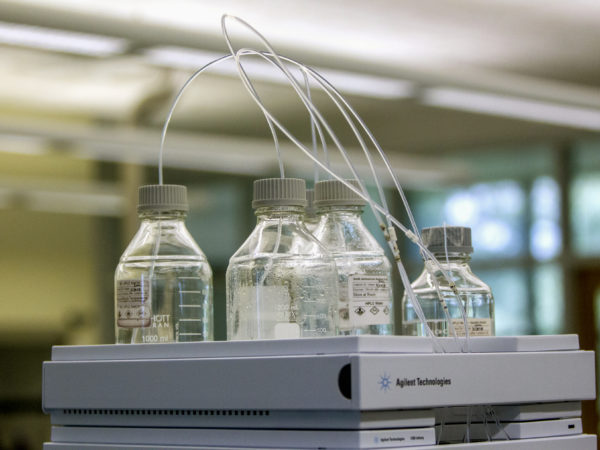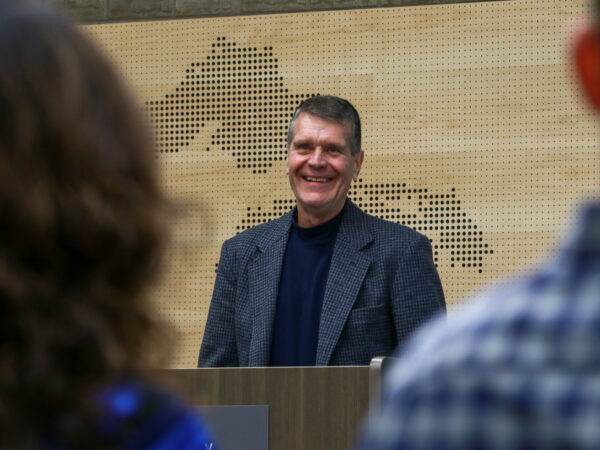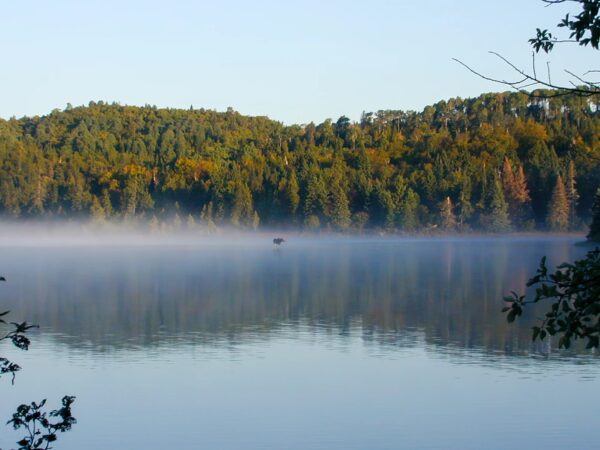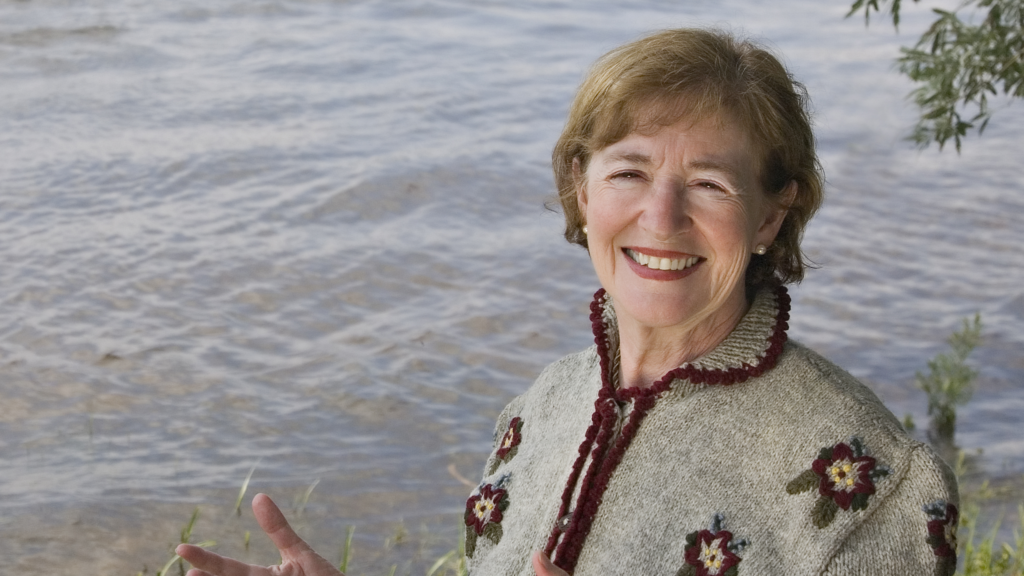
For Maude Barlow, the importance of hope was instilled by her parents as a child while having her morning oatmeal. It grew into a “lifelong mantra” that took her through the travails of 40 years of social justice and environmental activism in Canada and on the international stage.
Now, Barlow chronicles that hopeful trek in her 20th book, Still Hopeful: Lessons From A Lifetime Of Activism.
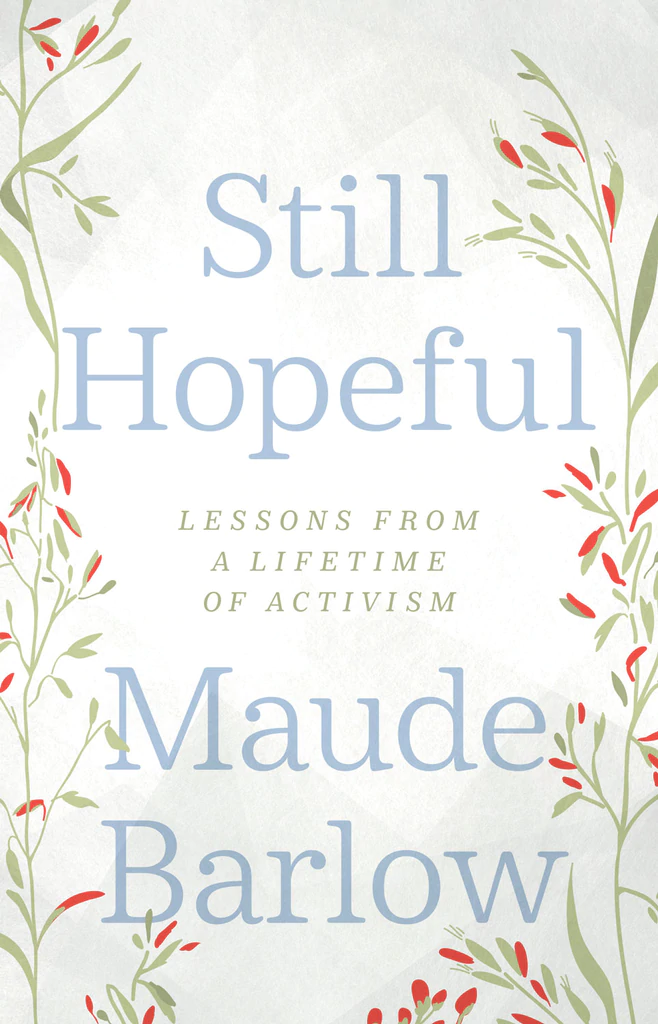
Courtesy ECW Press
Great Lakes Now’s Gary Wilson recently talked with Barlow who shared her unique definition of hope, how water became her “obsession” and a powerful account of how she brought the United Nations to Detroit to spotlight water shutoffs.
Barlow also explains the “myth of abundance” of the vast water of the Great Lakes and Canadian provinces and future threats they may face.
Barlow’s resume includes chair of the nonprofit Council of Canadians and senior adviser for water to the United Nations. She is currently board chair of the Washington-based advocacy group Food and Water Watch. She lives in Ottawa, Ontario.
The interview was conducted on the phone and via email. It was recorded, transcribed and edited for clarity and length.
Great Lakes Now: Environmental activists can be seen as having a perpetual negative outlook. But you wrote in “Still Hopeful”” that hope has been your “lifelong mantra.” How did that come about?
Maude Barlow: I learned it as a child with my oatmeal in the morning. It was a part of my upbringing that we’re lucky enough to live in a place with opportunity. We weren’t rich, my dad was a social worker, a social justice activist basically, and my mother was a homemaker. We were privileged in the sense of being compared to the rest of the world.
It was understood, you owe something back, and my father went on to lead the fight against capital punishment in Canada. So, it was bred into my bones.
I get down like everyone else but something always says, “No, you’ve got to ask yourself, ‘What’s the next appropriate step?’ and take it.” I have felt through my career and my life that a huge part of my role has been to present hope to people. To say, “It’s OK that we lost that fight. Look at the movement we’re building.” Part of my role has been cheerleader for the movement and at times suppressing my own negative thoughts and feelings while still putting out the facts. It’s not that I don’t want people to look the facts in the eye. Look them in the eye, then take a deep breath and do the work you have to do.
GLN: You looked to other activists, scholars and philosophers for definitions of hope. Is there now a Maude Barlow definition?
MB: Isn’t that an interesting question. Hope is what comes from a lifetime of activism. Activism is a commitment to something larger than yourself. Even larger than the particular issue you’re working on. It’s a commitment to a lifetime of trying to make the world, your country and community a better place. That means you lose some or even a lot and you win some but you build a movement, and for me the mantra of hope and activism is the legacy of building a movement.
GLN: A lesson you learned over those years of activism is that the work is not about winning a campaign, for example, against the proliferation of bottled water. It’s about building trust, friendship and the dinners and laughs with colleagues. Can you elaborate?
MB: We’ve all been home working through computers for two years and that’s been hard. It would have been a lot harder if I didn’t already know the people that I’m working with here in Canada, the U.S and around the world. You’ve built that trust and know each other and you’ve been there for them, and maybe it wasn’t your cause, but you were there for their cause. You walked their picket line or you went to a parliamentary hearing with them. Maybe you held them when they cried.
You built that human connection, and there is nothing that takes its place. I’ve never felt that so strongly as after two years of dealing through technology with humans that I care about. It’s important to support and thank people and give credit. And when these colleagues need you, you have to be there for them. It’s just that way and we all know it.
GLN: You’re arguably best known for your successful advocacy to have water declared a human right by the United Nations. Yet early in your career you had little interest in water issues until you learned how it was classified in the North American Free Trade Agreement (NAFTA). What in NAFTA caught your attention?
MB: It was actually in the Canada and the U.S. Free Trade Agreement which came first, then NAFTA adopted it. There was nothing about water in the body of the agreement.
This was when Ronald Reagan was president, and we had a Reagan-type Prime Minister in Brian Mulroney leading Canada. I was reading the annex in the back of the agreement, and it listed all the goods subjected to the new trade rules, and there was water in all its forms including ice and snow. I thought, what? At that time, we were fighting against two plans for massive commercial exports of Canadian water. And suddenly we’re signing an agreement with Ronald Reagan that says water is a tradable good.
That really caused us to ask, “What does this mean?” It was adopted in NAFTA and in other agreements. Water is still considered a tradable good. That’s when I thought, how could water be a tradable good? I didn’t understand, water comes out of the tap, and I had never thought about it.
And it sent me on a journey that took me to every part of the world. To the United Nations, the slums in Africa, South America and sent me on a journey to write many books on it. I became obsessed with the question of who owns water. Who is making decisions about it?
And I learned early on that of course we will have fights about water because we’re a planet running out of clean accessible water and whoever controls it is going to be powerful and potentially wealthy. I saw the stage being set for what I call the mighty contest between those who see water as a commodity like oil and gas to be put on the open market for sale, and those of us who say it’s a public trust, a human right, and a public service and must be protected with democratic rules if we are going to properly protect and share it.
GLN: In July 2014 in your role as chairperson of the Council of Canadians, you led a symbolic delivery of water to Detroit residents whose water had been shut off based on their inability to pay. In the book you refer to Canadian union executive Paul Moist who said that if the richest country in the world can bail out banks with public money, then public money can be used to help the people of Detroit. Are Detroit and U.S. cities moving closer to truly helping people who can’t afford water?
MB: There was good news at the beginning of the coronavirus pandemic where a number of municipalities and states put an end to water shutoffs. But those are being lifted as the threat hopefully is declining.
But we tend to think about people living without water and sanitation as being far away. However, there are more than 2 million people living with inadequate water and sanitation services in the U.S. Food and Water Watch did a study a few years ago and found that on average, 15 million people have their water shutoff every year. They did a 2020 study of 12 major cities, and they found that water and sewage costs increased 80 percent between 2010 and 2018. That’s incredible and they found that some key large parts of these cities had areas where two thirds of residents couldn’t pay their water bills. The bills accounted for 10 percent of their income, and they didn’t have the money. These are incredible statistics.
The notion that this is far away in a place with nothing to do with us is not true. I call it the perfect storm of declining water sources from pollution, diversion and over extraction. Plus the rising water rates and growing inequality between the rich and poor between countries and within countries.
That Detroit protest was so moving. I’ve actually been to Detroit quite a few times. I worked with people there and after one of the first visits, I heard that the shutoff was getting no media attention in the U.S. where tens of thousands were having their water shutoff. There was no water for food or toilets or for care of the elderly or kids, people had to go to public parks and put water in cans.
I contacted the United Nations special rapporteur on the human right to water and sanitation, and she visited Detroit, met with people and said this is appalling in a country as wealthy as this. So yes, Paul Moist’s words were right on and while the water we brought was symbolic, we wanted to say from your Canadian friends and neighbors and allies, we’ll share this and we understand that we are one people. It was a deeply moving event.
GLN: We talked in 2017 in Chicago and you said that Canadians and people in the Great Lakes region of the U.S. had bought into a “myth of abundance” about our water. That it’s seemingly infinite. The backdrop of your statement was the drought in the American West, which has worsened. Is that “myth of abundance” view still prevalent? Or are people becoming cognizant that water is finite and could be exported?
MB: The drought crisis of the America South and Southwest is deeply troubling and getting — finally — the attention it deserves. I cannot believe that there are not eyes on the waters of the Great Lakes and the Canadian provinces to solve this crisis by bulk water exports. In the last century there were several very serious proposals to export water of the Great Lakes and Canadian provinces to Asia and California, and the crisis was not nearly so serious then.
I do believe however, that the people who live on and love the Great Lakes have come to cherish them and would fight water exports, particularly to places where water has not been cared for and has been used to make a great deal of money for the few while so many are suffering. The answer to the drought is water protection and restoration, an end to water intensive commodity exports, deep commitment to stopping climate change and strong restrictions on water use for all but essential needs. Robbing the Great Lakes of the water needed to maintain a healthy ecosystem would create far greater problems than solutions and set the stage for future crises in the Basin. I do believe that increasingly, the people of the region know this.
GLN: Back to Still Hopeful, emerging generations today are inheriting the climate crisis. Are young Canadians in Montreal, Ottawa, Alberta and Vancouver ready to take up the challenge of a lifetime? Is there reason for them to have hope?
MB: They are taking up the climate challenge, and there’s great reason for hope. I say in the last chapter of the book that part of my optimism comes from young people. That they aren’t sheltered from the reality of the climate crisis. They’re knowledgeable, savvy and committed to creating a more just and equitable world.
Catch more news on Great Lakes Now:
Biden’s First Year: An infrastructure win, but climate and justice plans struggle
Featured image: Maude Barlow. Photo courtesy Council of Canadians
1 Comment
-
Still Hopefull book great, a must read for ALL Canadians
Young and old. Maude Barlow is 1 step behind Margaret
Atwood. I am a 4th generation French- Cree woman.


